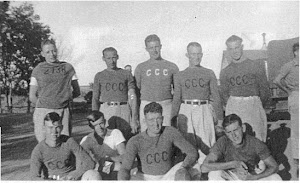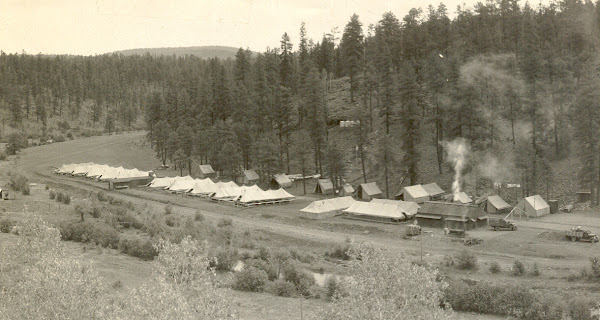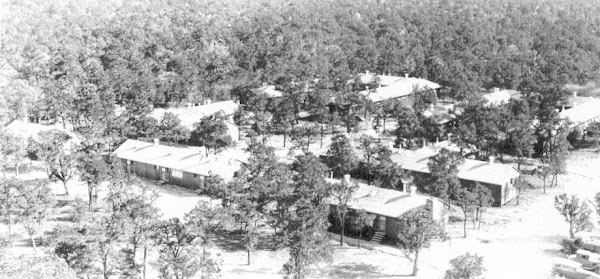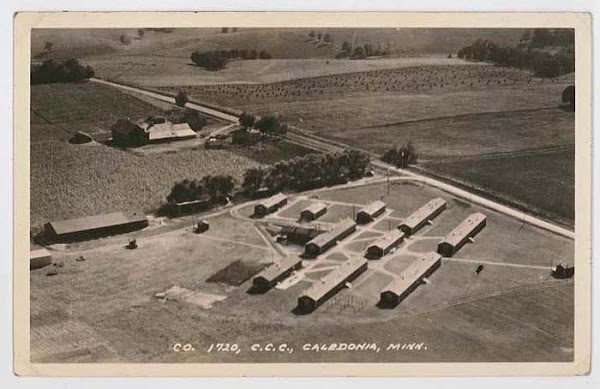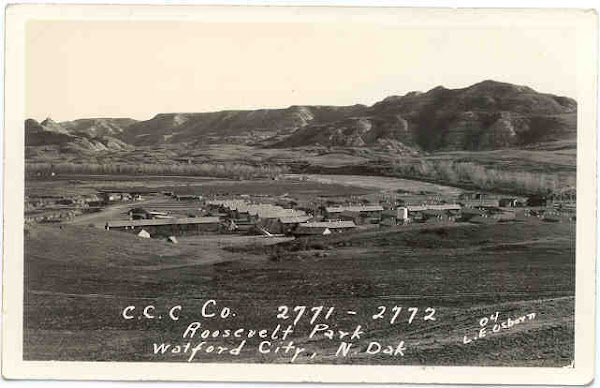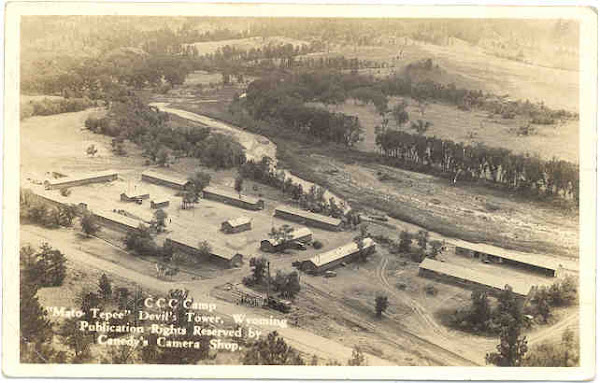Look closely at the 1938 map of Kansas Civilian Conservation
Corps camps (above) and you’ll see that all but one were “SCS” – Soil Conservation
Service – camps. Why do you suppose this
was?
The state of Kansas lies in the heart of what has come to be
known as the “Dust Bowl” region of the United States. Indeed if you study the map of the dust bowl
region that appears in Timothy Egan’s outstanding book The Worst Hard Time, you’ll see that more of Kansas lies in the
dust bowl region than any of her neighboring states. Egan notes that on a single day, “Black
Sunday,” April 14, 1935, more than 300,000 tons of topsoil was carried aloft by
the arid wind; twice as much dirt as was excavated to carve the Panama Canal!
Most scholars agree now that much of the dust bowl disaster
can be attributed to unwise farming practices that degraded the topsoil, making
it vulnerable to drought and high winds.
Sadly, the CCC, like the Soil Conservation Service, came along too late
to avoid the worst effects of the dust bowl, however it is safe to say that the
creation of the CCC helped reverse the trend of rip and tear agriculture,
perhaps avoiding further erosion and damage to the land.
Congress appropriated funds to create the Soil Conservation
Service just a few days after “Black Sunday” in 1935 and in short order across
the U.S. 150 CCC camps previously under the U.S. Forest Service were reassigned
for work under the SCS. But that doesn’t
mean there weren’t some terrific recreational improvements made by the CCC in
Kansas, as we’ll see.
Not surprisingly perhaps, Ren and Helen Davis list only one
Kansas park in their book Our Mark On
This Land. According to the Davises,
the only Kansas state park to benefit from CCC labor did so as a result of work
by enrollees in an SCS camp: Camp
SCS-10-K. Camp SCS-10-K was situated in
the southeastern corner of Kansas, but you’ll notice that the 1938 CCC camp map
shows an SP-2 up in the northwesterly part of Kansas; this is a discrepancy
that I am currently unable to completely reconcile. The facts are unclear even in Perry Merrill’s
Roosevelt’s Forest Army. In the state section devoted to CCC work in
Kansas, Merrill notes that there was one state park camp in Kansas in June of
1937, however later in the section he writes that there were no state parks in
Kansas until 1955.
The editor at The
Civilian Conservation Corps in Kansas very kindly provided some insight
into the nature of parks work by the CCC in Kansas. While a map of Kansas CCC camps might appear
to be heavily laden with SCS designated camps, there were aspects of the soil
conservation projects that translated directly to parks and recreation work
resulting in park type improvements – including a number of lakes - even if the
underlying nature of the camp and company was soil conservation or erosion
control.
At the end of the day we can take the numbers directly from
the fiscal year 1937 Annual Report of the
Director of Emergency Conservation Work which lists the breakdown of Kansas
CCC camps thus:
Soil Conservation Camps: 16
State Park Camps:
1
Military Reservation Camps: 2
The fiscal year 1939 Annual Report of the Director of the Civilian Conservation Corps
(Notice the name change between the 1937 and 1939 reports; from “Emergency
Conservation Work” to “Civilian Conservation Corps?”) reported the distribution
of CCC camps in Kansas this way:
State Park Camps:
1
Soil Conservation Corps Camps: 13
If you compare the numbers from the 1939 report
with the 1938 map that accompanies this article you’ll see that the total
number of SCS camps differs by only one camp between the two. Obviously, given the numbers in the Annual Reports and given what we know
about the Dust Bowl and the desperate need for erosion control and soil
conservation efforts in America’s heartland, it’s little wonder that so many of
Kansas’s CCC camps were geared toward this sort of work but keep in mind that
in doing this work, the CCC boys also created some lasting and valuable
recreational spaces that Kansan’s enjoy even today.Another interesting bit of information for Kansas that appeared in the 1939 Annual Report was the address of the main selection agency for CCC enrollment in Kansas at the time. If you were a young lad in the state of Kansas in 1939 and you aspired to enroll in the CCC, you would have been well advised to contact the following:
State Department of social Welfare
Frank E. Milligan, Chairman
Mrs. Jean L. Benson, Supervisor CCC Selection
801 Harrison Street
Topeka, Kansas
And speaking of Kansas CCC enrollment, the 1939 Annual Report notes that 3,016 junior enrollees were selected in Kansas that year, along with 164 veterans.
Specific work totals in the 1939 Annual Report show that the CCC performed over 1,200,000 square yards of gully tree planting in Kansas that fiscal year. Additionally, the CCC dug over 306,000 linear feet of diversion ditches, quarried over 36,000 tons of limestone and they excavated 31,573 cubic yards of dirt to build channels, canals and ditches.
Life in the 1930s was a precarious thing and we’re well aware that some CCC enrollees didn’t survive their time in the Triple C’s. The February 9, 1925 issue of Happy Days reported on the death of enrollees Mervin Chapman and Kenneth Moore from Company 729, Ashland, Kansas. Chapman and Moore were killed in a private plane crash. Edward Cantrell from Company 1711 at West Mineral, Kansas, was killed as a result of falling into a mine shaft according to the August 8, 1936 issue of Happy Days. A Local Experienced Man (LEM) by the name of Donald Stutes was killed when a grindstone fragment hit him in the face. Stutes was assigned to Company 4702 at Burlington, Kansas, according to the March 27, 1937 issue of Happy Days. It is important to consider these losses, even as we marvel at the wonderful work accomplished by the CCC in Kansas and all across our United States.
Be sure to visit The
Civilian Conservation Corps in Kansas for additional information on the work and
legacy of the CCC in Kansas. You’ll also
see some terrific photos of Kansas CCC work there.
Sources
Davis, Ren & Helen, (2011), Our Mark on This Land: A
Guide to the Legacy of the Civilian Conservation Corps in America’s Parks, The
McDonald & Woodward Publishing Company.
Egan, Timothy, (2006), The
Worst Hard Time, Houghton Mifflin Company, New York.
Merrill, Perry H, Roosevelt’s
Forest Army, 1981, Perry H. Merrill, Publisher.
U.S. Government Printing Office, Annual Report of the Director of Emergency Conservation Work, Fiscal
Year Ended June 30, 1937.
U.S. Government Printing Office, Annual Report of the Director of the Civilian Conservation Corps Fiscal
Year Ended June 30, 1939.
Copyright, 2013, Michael I. Smith




